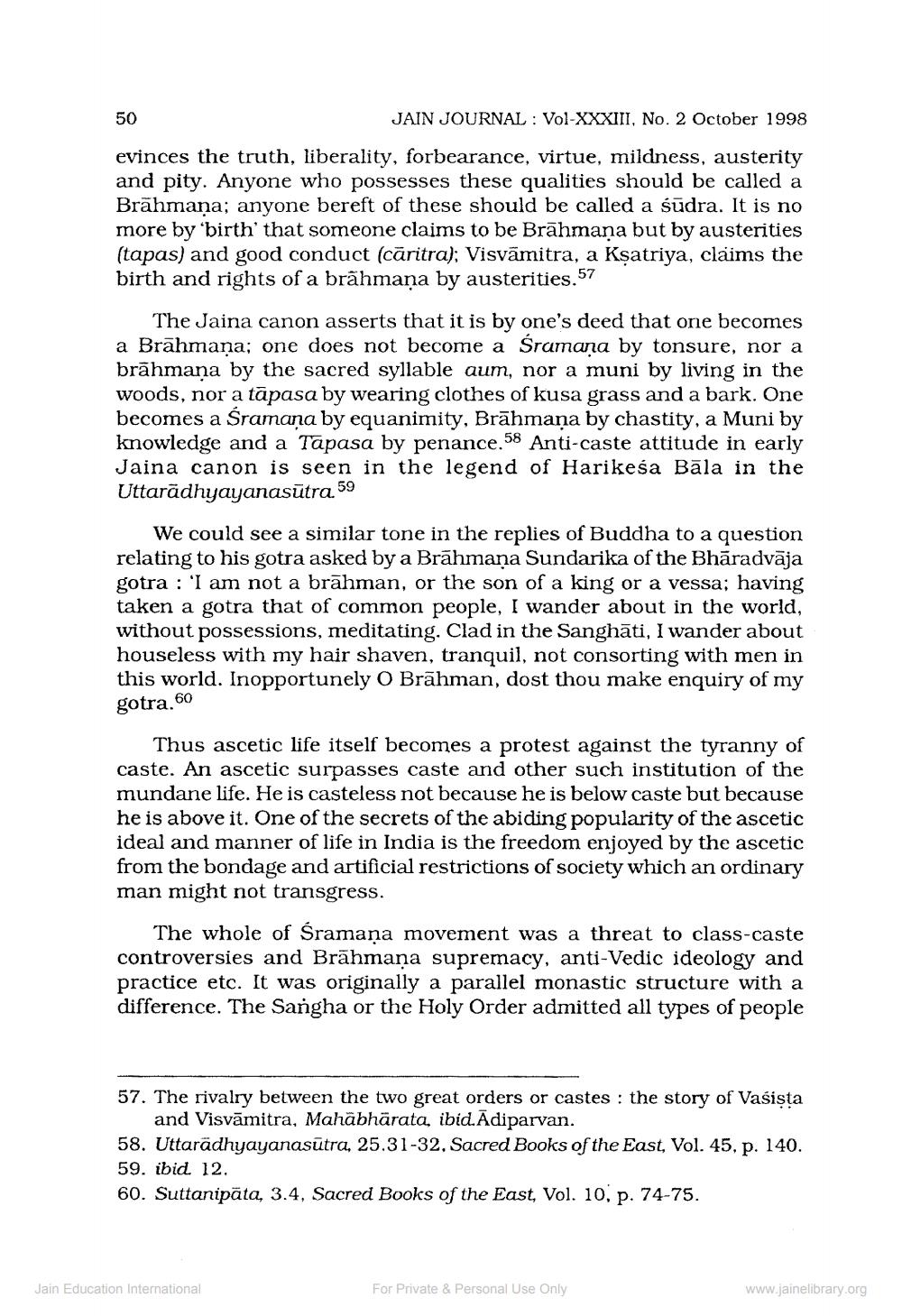________________
50
JAIN JOURNAL: Vol-XXXIII, No. 2 October 1998
evinces the truth, liberality, forbearance, virtue, mildness, austerity and pity. Anyone who possesses these qualities should be called a Brahmana; anyone bereft of these should be called a sudra. It is no more by 'birth' that someone claims to be Brāhmaṇa but by austerities (tapas) and good conduct (caritra); Visvamitra, a Kṣatriya, claims the birth and rights of a brahmana by austerities.57
The Jaina canon asserts that it is by one's deed that one becomes a Brāhmaṇa; one does not become a Śramana by tonsure, nor a brahmana by the sacred syllable aum, nor a muni by living in the woods, nor a tāpasa by wearing clothes of kusa grass and a bark. One becomes a Śramana by equanimity, Brahmana by chastity, a Muni by knowledge and a Tapasa by penance.58 Anti-caste attitude in early Jaina canon is seen in the legend of Harikeśa Bāla in the Uttaradhyayanasūtra.
59
We could see a similar tone in the replies of Buddha to a question relating to his gotra asked by a Brahmana Sundarika of the Bharadvaja gotra: 'I am not a brahman, or the son of a king or a vessa; having taken a gotra that of common people, I wander about in the world, without possessions, meditating. Clad in the Sanghāti, I wander about houseless with my hair shaven, tranquil, not consorting with men in this world. Inopportunely O Brahman, dost thou make enquiry of my gotra. 60
Thus ascetic life itself becomes a protest against the tyranny of caste. An ascetic surpasses caste and other such institution of the mundane life. He is casteless not because he is below caste but because he is above it. One of the secrets of the abiding popularity of the ascetic ideal and manner of life in India is the freedom enjoyed by the ascetic from the bondage and artificial restrictions of society which an ordinary man might not transgress.
The whole of Śramana movement was a threat to class-caste controversies and Brāhmaṇa supremacy, anti-Vedic ideology and practice etc. It was originally a parallel monastic structure with a difference. The Sangha or the Holy Order admitted all types of people
57. The rivalry between the two great orders or castes : the story of Vašista and Visvamitra, Mahabharata, ibid.Adiparvan.
58. Uttaradhyayanasūtra, 25.31-32, Sacred Books of the East, Vol. 45, p. 140. 59. ibid. 12.
60. Suttanipäta, 3.4, Sacred Books of the East, Vol. 10, p. 74-75.
Jain Education International
For Private & Personal Use Only
www.jainelibrary.org




